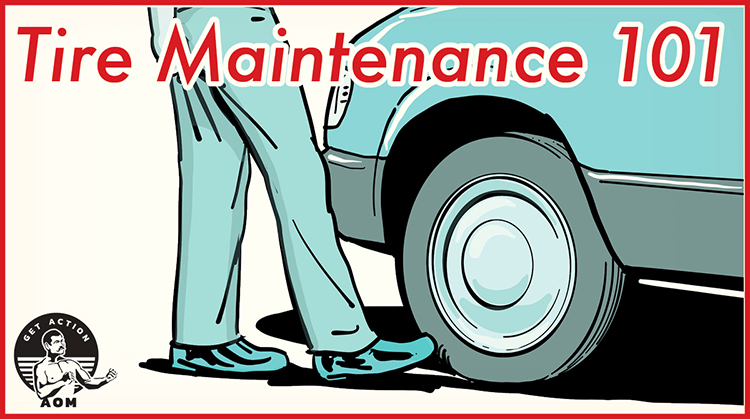
When it comes to automotive maintenance, your tires often get the short shrift. Unless you get an electronic low inflation warning up on your dashboard, you’re not apt to think about your wheels very much.
But your tires are the workhorses of your car. They’re the only thing on your vehicle that directly contacts the road. If something is off on your tires, it can cause a whole host of problems, from poor handling in lousy weather, to braking issues, to a decrease in overall fuel efficiency. In a worst-case scenario, a worn tire can blow out, potentially causing an accident.
Regular tire inspection and maintenance can nip all these problems in the bud, saving you money, and potentially even your life.
Here’s how to do it.
Your Once-a-Month Tire Inspection
You should inspect your tires at least once a month to see that they’re in proper working condition. It doesn’t take long — 10 minutes, tops.
Check Air Pressure. Maintaining proper tire pressure will keep you safe and even save you a little dough. Improperly inflated tires — and this may mean overinflated or underinflated — don’t handle or stop as well as tires with the proper pressure. Improper inflation also increases the chance of a blowout. Plus, tires with the right pressure have a longer life and improve fuel efficiency.
While all cars made since 2007 have Tire Pressure Monitoring Systems (TPMS) that warn you when a tire is either overinflated or underinflated, it’s still a good idea to test your tire pressure with an old-fashioned tire pressure gauge at least once a month. TPMS can malfunction and spit out erroneous readings. (Note: It’s also a good idea to have a mechanic check your TPMS about once a year to ensure it’s working correctly).
Checking your tire pressure takes less than two minutes. Here’s how to do it:
For an accurate reading, always check tire pressure when your tires are “cold” before you’ve driven around on them. Tires heat up as you drive. If you’ve already been driving around for a while, let the tires “rest” for at least four hours before checking the pressure.Find out the tire pressure recommended for your car (it’s in your owner’s manual and on a panel inside the driver’s side door). Always fill the tires to this recommended level, regardless of tire brand, and not to the max PSI found on the tire sidewall — that number indicates the maximum pressure the tire needs to carry its heaviest load, not the tire’s ideal PSI.Check tire pressure with a tire pressure gauge.Fill when needed.Check for Wear and Tear. Give each tire a quick look-over. You’re checking for obvious signs of wear and tear like gashes, bubbles, and embedded objects like nails and screws. If you see any of those, immediately replace the tire.

After that cursory look, check more closely for any signs of uneven wear on the tread. The type of uneven wear on your tires will indicate an underlying problem you’ll need to address.
Toe or camber wear: Camber and toe refer to how your wheels are aligned on your car. Camber is the outward and negative tilt of the wheel. Toe refers to the direction the wheels are pointed. For example, a vehicle with the front wheels toed-in means the two front wheels are pointing together. Imagine your car’s front wheels being pigeon-toed. Camber and toe wear will cause your tires to look uneven and misshapen. If you see camber and toe wear, your car’s wheels are out of alignment. Center wear: If the center tread on your tire is worn, but the edges are not, it means your tire is overinflated. Too much air pressure causes the tire’s middle section to predominantly be in contact with the road. Edge wear: If the edges of your tire’s tread are worn, but the center is not, your tire is underinflated. Too little air pressure causes the tire’s outer edges to predominantly be in contact with the road. Patch or cup wear: If your tire
No comments:
Post a Comment